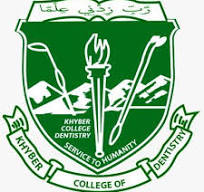PATTERN OF IMPACTED MANDIBULAR THIRD MOLAR IN PATIENTS REPORTING TO DEPARTMENT OF ORAL AND MAXILLOFACIAL SURGERY,KHYBER COLLEGE OF DENTISTRY, PESHAWAR
DOI:
https://doi.org/10.33279/jkcd.v2i2.491Keywords:
Impacted Mandibular 3 rd Molar, Pell and Gregory classification, Pattern.Abstract
Objective: The aim of this study was to determine the pattern of impacted mandibular third molar.
Materials and Methods: One hundred and fifty five patients were recruited in this study. Their data was collected on a specially designed proforma. Periapical x-rays and where necessary orthopantomograms were used to determine the pattern of impacted mandibular third molar.
Results: Ninety Five males and 60 females participated in this study. The age ranged from 17 to 46 years. Based on angulation, mesioangular impaction (40.6%) was the most common pattern. According to the level and relationship of the impacted tooth to anterior border of the ramus of mandible, Type IA (45.8%) was the most common pattern.
Conclusion:Majority of the patients requiring surgical removal of impacted mandibular third molar were males in their third decade. Mesioangular and Type IA were the common pattern.
Downloads
Published
How to Cite
Issue
Section
License
Copyright (c) 2012 Hira Ayaz, Atta-ur-Rehman

This work is licensed under a Creative Commons Attribution-NonCommercial-NoDerivatives 4.0 International License.
You are free to:
- Share — copy and redistribute the material in any medium or format
- Adapt — remix, transform, and build upon the material
- The licensor cannot revoke these freedoms as long as you follow the license terms.
Under the following terms:
- Attribution — You must give appropriate credit , provide a link to the license, and indicate if changes were made . You may do so in any reasonable manner, but not in any way that suggests the licensor endorses you or your use.
- NonCommercial — You may not use the material for commercial purposes .
- No additional restrictions — You may not apply legal terms or technological measures that legally restrict others from doing anything the license permits.










